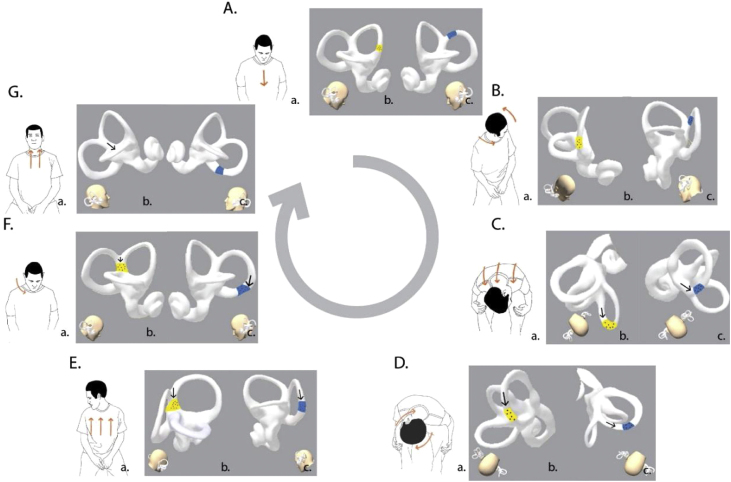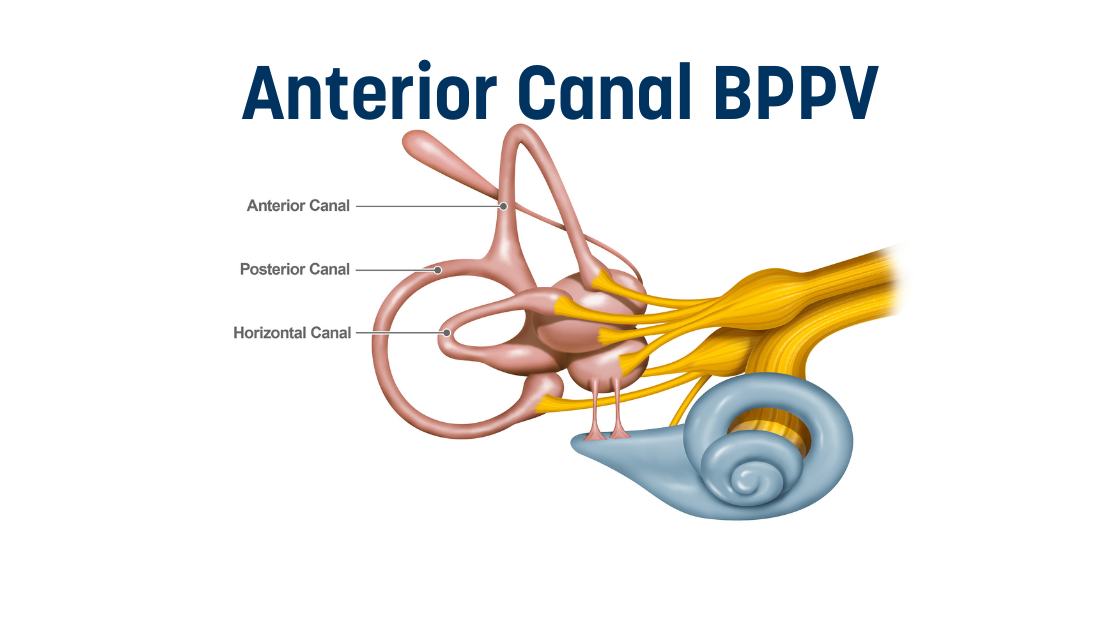
What is Anterior Canal BPPV?
Benign paroxysmal positional vertigo (BPPV) is a type of positional vertigo. BPPV occurs when free-floating otoconia (tiny crystals which are in every inner ear) move in one of the semicircular canals (canalithiasis) or by otoconia adhered to the cupula, which is the membrane located at one end of each semicircular canal (cupulolithiasis). Anterior canal BPPV is rare at ~1% of cases (Bhandari et al., 2023), although others estimate 3-12% (Garaycochea et al., 2022). It can be identified in a Dix-Hallpike test or even better in a deep or supine head hanging test. Some researchers such as Ludwig and Schubert (2023) theorize that the majority of apparent anterior canal BPPV cases may actually be short arm posterior canal BPPV. While classic treatments for the posterior canal such as the modified Epley sometimes help, several newer options for anterior canal BPPV and short arm posterior canal BPPV have been proposed, including a NEW one by Garaycochea and his team in Spain (scroll further down for details)!
What is Short Arm Posterior Canal BPPV?
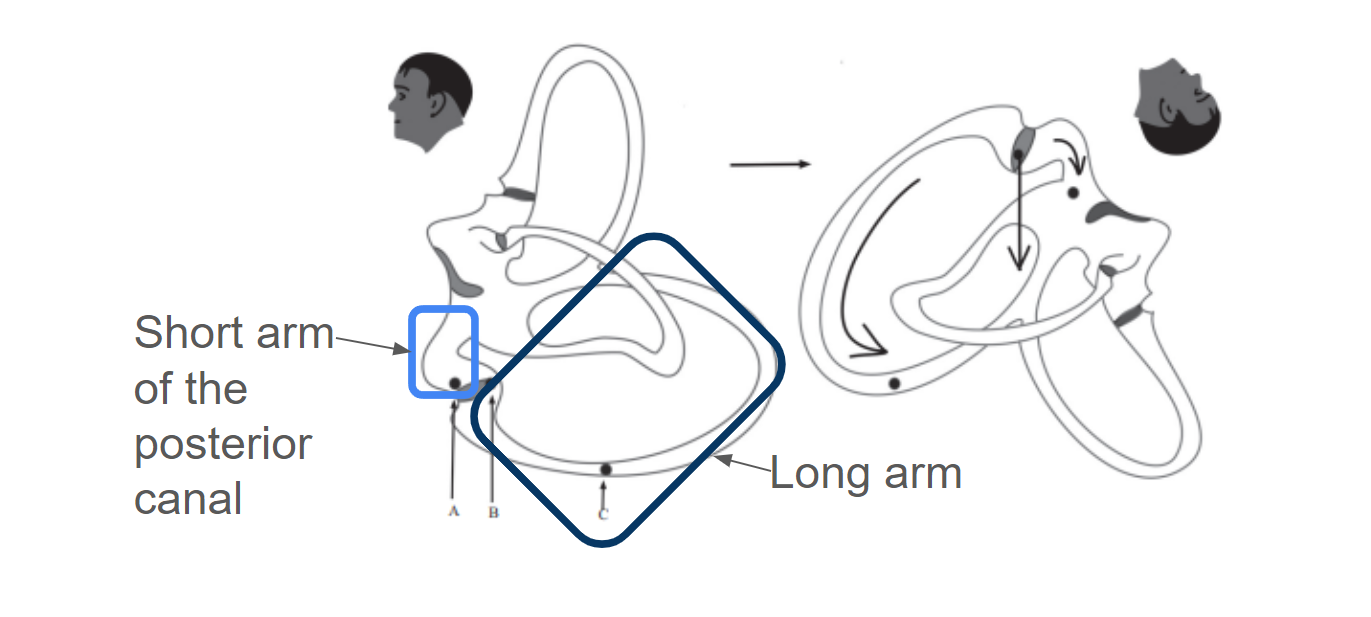
(Image: Büki, Mandalà and Nuti, 2014)
To better understand short arm posterior canal BPPV and its associated nystagmus, here are 3 key points:
1. The short arm of the posterior canal is located between the utricle and the utricular side of the cupula. Otoconia may shift from the utricle to the “infundibulum” (say that 5 times fast!), which consists of a short section of the canal that connects the posterior canal ampulla to the utricle (see image above). “Anatomically, the most vulnerable site is the short arm of the posterior semicircular canal because of its conical shape and its position directly below the utricle when the patient is upright” (Ping et al., 2022).
2. BPPV that occurs in the short arm of the posterior canal can present with no nystagmus or downbeat nystagmus during a Dix-Hallpike or supine head hanging test. If the cupula is not deflected due to limited neck extension, nystagmus may not be elicited. Some suggest that these cases are related to “subjective BPPV,” also known as “type 2 BPPV” (Harmat et al., 2022), where no nystagmus is observed but the patient’s symptoms are elicited and subside in a classic BPPV manner during a Dix-Hallpike test. If the cupula is deflected by debris in the short arm moving toward the cupula, it will be inhibited, and a constant, low-amplitude downbeat nystagmus with or without torsion towards the uninvolved side will be observed (Helminski, 2022).
3. Nystagmus and vertigo due to short arm posterior canal BPPV is more likely than classic long arm posterior canal BPPV to require maneuvers other than the modified Epley (Califano et al., 2021). It’s appropriate to change maneuvers (see below) if one maneuver isn’t providing the desired result in 1-2 reps. In addition, if the downbeat nystagmus is sustained and minimally symptomatic or asymptomatic, strongly consider a central (including migraine) or vascular cause of the positional vertigo, then refer for additional testing/imaging as needed (Büki et al., 2014).
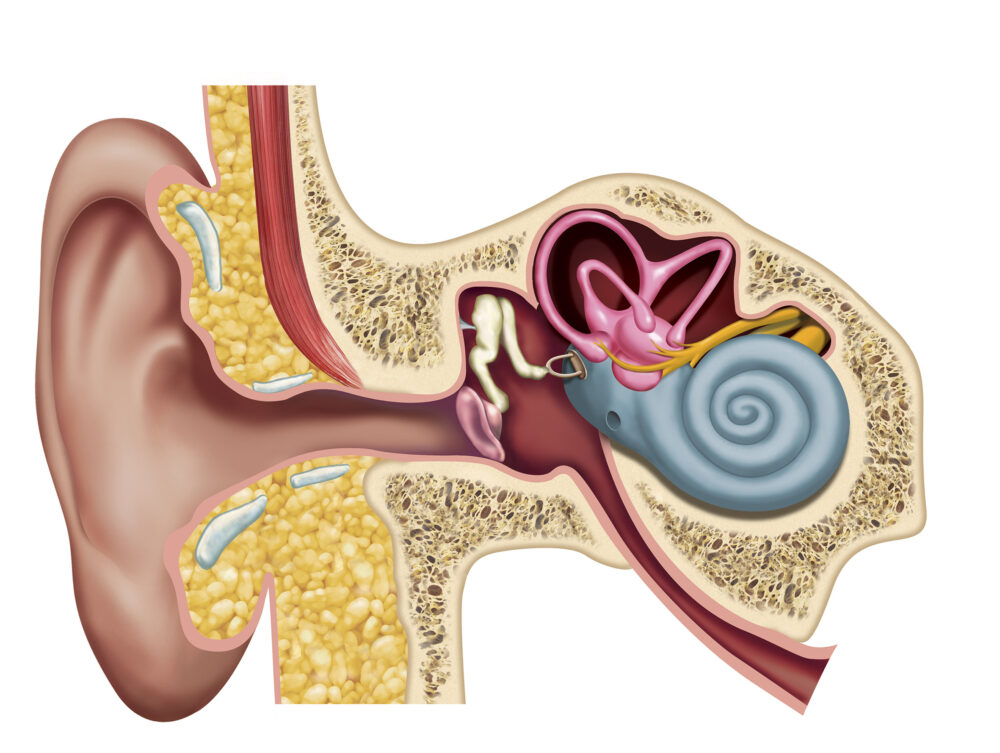
What works best?
- “The Classic” Modified Epley or Canalith Repositioning Maneuver or Canalith Repositioning Procedure (CRP) – 75.9% effectiveness for anterior canalithiasis BPPV (Anagnostou et al., 2015). Option to perform the “reverse Epley,” although it has somewhat fallen out of favor compared to more recently developed maneuvers since it does not seem to clear the anterior canal on simulated models (Bhandari et al., 2021).
- Reverse Semont for anterior cupulolithiasis – No data on its effectiveness is available. In addition, some researchers even question the existence of anterior cupulolithiasis (Traboulsi and Teixido, 2021).
- Yacovino for anterior canalithiasis and short arm posterior canalithiasis – The Yacovino maneuver is an appealing treatment since has a 78.8% effectiveness for anterior canal BPPV (Anagnostou et al., 2015) and does not require a confident determination for the side involved. However, the classic Yacovino maneuver demonstrates a risk of conversion to the posterior canal (Bhandari et al., 2021). Therefore, the more recently suggested modified Yacovino has the patient transitioning from supine with at least 30 degrees cervical extension in midline (Position 1) to seated upright (skipping the chin tuck step/Position 2 and coming directly into upright sitting). Yang et al. (2019) found that the Yacovino maneuver can also be effective for anterior cupulolithiasis.
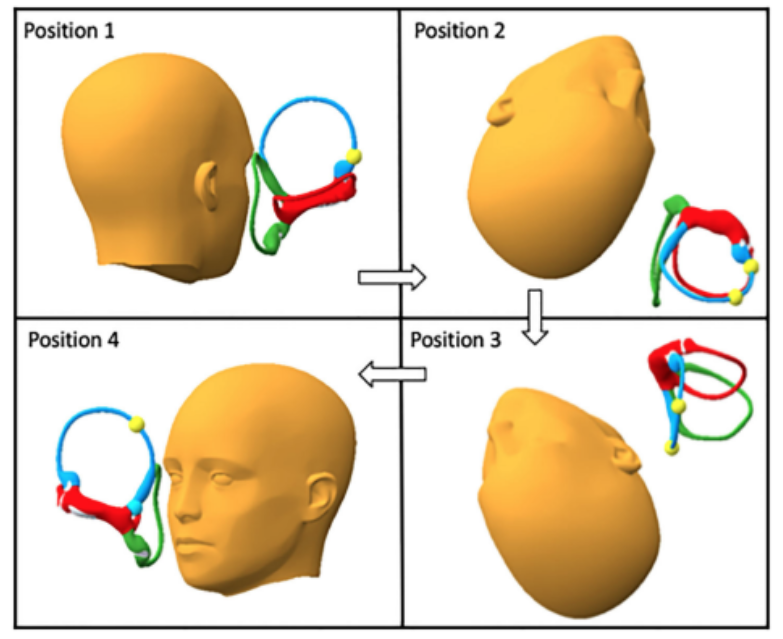
|
4. Short CRP (treatment for right anterior canalithiasis is pictured above) – Position 4 of the CRP is omitted altogether, avoiding a potential pitfall of a chin tuck-related treatment failure. It does require identification of the affected side and 40 degrees of neck extension. One of my latest favorites. 5. Rhako (2002) suggested a maneuver that involves rolling into and out of prone. You can view an image with this maneuver in Dr. Hain’s article on anterior canal BPPV. However, no studies have confirmed effectiveness. Crevits (2004) suggested a maneuver similar to Yacovino’s but with the patient remaining in forced prolonged upright head position for 24 hours afterwards, which is generally not a practical solution. Kim’s maneuver for anterior canalithiasis (2005) is somewhat similar to a deep Dix-Hallpike but with a head turn to stop at midline – awaiting any follow up studies to confirm effectiveness. 6. NEW Garaycochea/novel maneuver for anterior canal and apogeotropic (short arm) posterior canal BPPV – This new maneuver has three proposed benefits (a) treating anterior canal BPPV (b) shifting otoconia from the short arm of the posterior canal into the long arm of the posterior canal to allow for follow-up effective treatment with a modified Epley (c) assisting in the differential diagnosis between anterior canal-BPPV and a contralateral posterior canal-BPPV based on whether a follow-up modified Epley was needed or not. Learn more about Anterior Canal BPPV with a video case example by Dr. Danielle Tolman of Vestibular Today! |
NEW Garaycochea Maneuver
Right downbeat nystagmus (right anterior or left posterior short arm) treated in the picture.
Steps and Timing:
A. No time frame for head forward flexed 45 degrees (position 1/A) given but 30 seconds to 1 minute is reasonable.
B. Same timing is reasonable for Position 2/B with head turn left.
C. Quick body bend forward then hold 1 minute in position 3/C (head is still to the left 45 degrees).
D. Patient’s head is rotated 90 degrees to the right and then held 1 minute in position 4/D.
E. With patient’s head remaining turned to the right, they bring their body quickly to upright sitting with no timing given once there, but 30 seconds to 1 minute is reasonable.
F. Finally, the patient slowly turns their head to midline (no timing given).
G. Patient elevates their head to forward gaze.
